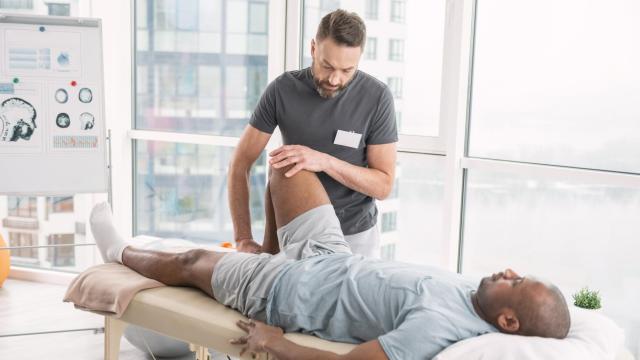In the past year, as more people have been working from home, physical therapists have been seeing an increase in patients with “dead butt syndrome,” or DBS for short, which is pain, numbness, and tingling in the butt, which can often extend to the lower back and legs. If you’ve ever stood up after sitting for a while and felt a tingling and numbness in your butt, that’s a little bit what DBS feels like, only for some people, it progresses to a point where it severely impacts their quality of life.
“Once these symptoms persist for more than an hour or two, and you’re really noticing that they are affecting you during the day, […] then that would be something I would recommend getting further medical evaluation for,” said Dr. Tyler Detmer, a physical therapist at Washington University at St. Louis.
Is dead butt syndrome a real medical diagnosis?
DBS is usually attributed to weak gluteal muscles but, as Detmer explains, this condition is not a formal medical diagnosis, but rather an umbrella term for a variety of issues that can cause these symptoms. Similar to the way sciatica refers to pain along the sciatic nerve, the cause of which may vary, DBS is shorthand for a collection of symptoms — in this case tingling, numbness, and pain in the back, butt, and leg area, with differing causes.
You’ll sometimes see dead butt syndrome referred to as “gluteal amnesia,” with the cause said to be that the glutes have forgotten how to fire. This is a misconception, though. “Our glute muscles don’t just forget how to work,” Detmer said.
Instead, the reasons for weakened glute muscles can be complex, such as a decrease in efficiency either due to limited circulation, compression of the sciatic nerve, or general muscle stiffness. With limited circulation, your muscles just might not get the oxygen or nutrients they need for optimal function; or, if the sciatic nerve gets pinched, then the nerves aren’t firing quite as well, which can cause the numbness and tingling. “You can think of this like a garden hose being kinked,” Detmer said.
How does dead butt syndrome develop?
Our glutes are responsible for moving our hips and stabilizing our pelvis, in addition to the surrounding muscles, which assist and improve these movements. This includes the hip flexors, which will contract as the glutes relax, and vice versa, allowing for opposite motions. Poor posture, such as when you are slumped over your laptop all day, can also be a factor in developing DBS.
The good news is that even if you are suffering from DBS, “we tend to build in duplicate patterns to compensate for any issues that may arise,” Detmer said. Our bodies are adaptable. They just can’t quite handle the stress of Zoom meeting after Zoom meeting, with no regular stretching or moving.
How to avoid dead butt syndrome
The majority of people who develop DBS do so because they are sitting all day. Given how much our working conditions have changed this past year, Detmer has seen a lot more people in his clinic with DBS, as well as other ergonomic-related issues, such as neck and sciatic pain.
Detmer’s biggest recommendation for preventing DBS is to make you move regularly during the day, making sure to get up from your desk at least every 30 minutes to an hour. This movement will improve your circulation, as well as prevent your muscles from getting too stiff. He also recommends adding in a few stretches and exercises, such as a few squats, some leg marches, or toe touches.
In addition to making sure you’re moving regularly throughout the day, it’s also really important to set up your office in a way that will let you work without developing issues like DBS. That means no working on your laptop all day while sitting on the couch. “I would recommend trying to replicate the office environment as much as you can when you’re working at home,” Detmer said.

Leave a Reply
You must be logged in to post a comment.